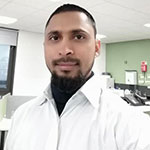
Host: AMO GmbH, Aachen
Area of Work: Integrated Perovskite on-Chip Laser. He intends to combine perovskite nanocrystals and quasi 2-D perovskites with silicon nitride to integrate first order distributed feedback grating resonators or ring resonators in order to produce on-chip lasers.
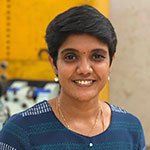
Host: Fraunhofer LBF, Darmstadt
Area of Work: Adaptive torsional vibration isolators using Magneto-rheological elastomer (MRE). She intends to develop a prototype adaptive torsional vibration isolator (ATVI) using magnetorheological elastomer (MRE), whose dynamic properties can be controlled in real-time using magnetic field.
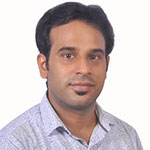
Host: Fraunhofer IAPT, Hamburg
Area of Work: Design and development of aerospace structural part manufactured through laser+wire based directed energy deposition technique. He intends to use additive manufacturing (AM) techniques to improve buy-to-fly ratio, lead-time, and structural integrity of aerospace components (like satellite bracket, aeroengine stators, etc.)
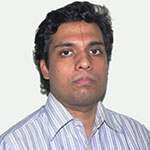
Host: Mentalab GmbH, Munich
Area of Work: SmarTaTSS: Tattoo Sensors for Smart Sleep Monitoring. He aims to design and develop a tattoo sensor for the continuous monitoring of the respiratory rate for sleep quality assessment.
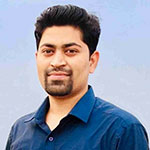
Host: Fraunhofer IWU, Chemnitz
Area of Work: Digital twin for machining with structure integrated active damper. He aims to integrate active damping model of metal cutting vibrations in the digital twin of machining process and improve machining performance.
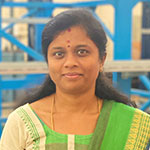
Host: Fraunhofer IWES, Oldenburg
Area of Work: An improved framework for assessment of loads on multi-megawatt wind turbines under yawed flow in Fraunhofer Institute for Wind Energy Systems. She intends to aims to use high fidelity tools such as Computational Fluid Dynamics (CFD) with Actuator Line Model (ALM) to calibrate the correction models adopted in conjunction with BEM.
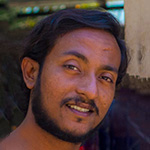
Host: Fraunhofer IWES, Oldenburg
Area of Work: Development of a low-order acoustic propagation model for new-generation wind turbines operating above the atmospheric boundary layer. The model will be able to describe the fluctuating characteristics of noise at different locations in a three dimensional space.
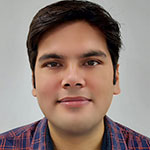
Host: DendroPharm, Berlin
Area of Work: Through his project “NANOpain” he seeks to treat inflammation with novel dendritic nano-drugs without the addictive, potential for a better quality of life for patients with post-operative pain, cancer and chronic pain.
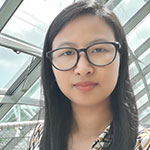
Host: KoRoH GmbH, Karlsruhe
Area of Work: Capacity of joints made of high strength steel tubular section. A method for the numerical determination of the design resistance of punching shear will be made available which can be used later for numerical parameter studies.
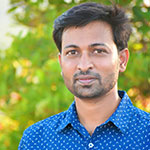
Host: FAIR GmbH, Darmstadt
Area of Work: Machine Learning. He intends to use novel Machine Learning (ML) and Deep Learning (DL) algorithms to distinguish particles of interest (signal) from other particles (background) produced in large energy particle colliders.
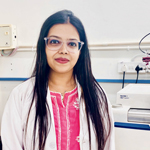
Host: University of Würzburg
Area of Work: Development of solid-state solar thermal fuels derived from liquid crystalline norbornadiene derivatives
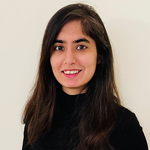
Host: RWTH Aachen University
Area of Work: Understanding the role of Idiopathic pulmonary fibrosis in cancer initiation
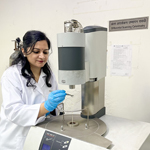
Host: German Aerospace Centre (DLR), Institute of Materials Research Cologne
Area of Work: High Power Factor materials for efficient thermoelectric heat pumping applications
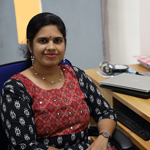
Host: Technische Universitat Dresden
Area of Work: Sparse matrix multiplication co-processor for deep learning applications on RISC Vplatform
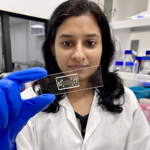
Host: Technische Universitat Dresden
Area of Work: Circumferential cell migration towards a neuropeptide gradient for healing critical-sized cranial defects
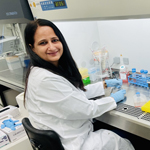
Host: University Hospital Ulm
Area of Work: Antibacterial and anti-biofilm activity of the human peptide library against Group B Streptococcus
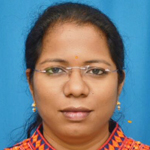
Host: Alfred Wegener Institute Helmholtz Centre for Polar and Marine Research (AWI) Bremerhaven
Area of Work: Understanding and implementing IMTA: An efficient technology towards sustainable mariculture, carbon sequestration, and blue economy boost
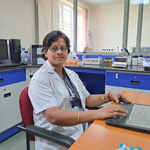
Host: Reutlingen University
Area of Work: Exploration of 3D adipose tissue models to study long-acting Statin nanoparticles to assess the efficacy and suitability as an alternative for animal models
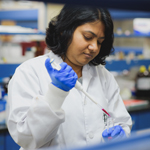
Host: Universitat Leipzig
Area of Work: Engineering hybrid MOF composite materials with rationally designed Ligands forPhotocatalytic Hydrogen Evolution
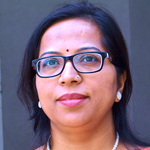
Host: Max Planck Institute of Molecular Plant Physiology
Area of Work: Investigating the role of long non-coding RNAs in phytohormone-mediated autonomous seed development in Arabidopsis.

Host: SASTRA Deemed University
Area of Work: Development of a highly bioactive cell-derived extracellular matrix -hybrid biomaterial for biofabricating advanced wound dressings
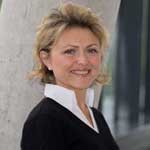
Host: DBT-National Institute of Animal Biotechnology (NIAB)
Area of Work: Development of RENACER® fiber-based drug delivery system: A non-toxic, fully resorbable and environmentally friendly wound healing biomaterial
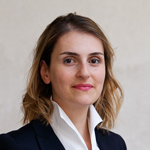
Host: IIT Indore
Area of Work: The role of the higher order and symplectic communications in the power grid stability
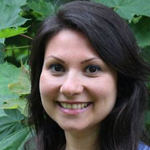
Host: BITS Pilani (Hyderabad campus)
Area of Work: Optogenetic modulation of cAMP and cGMP signalling in Toxoplasma gondii